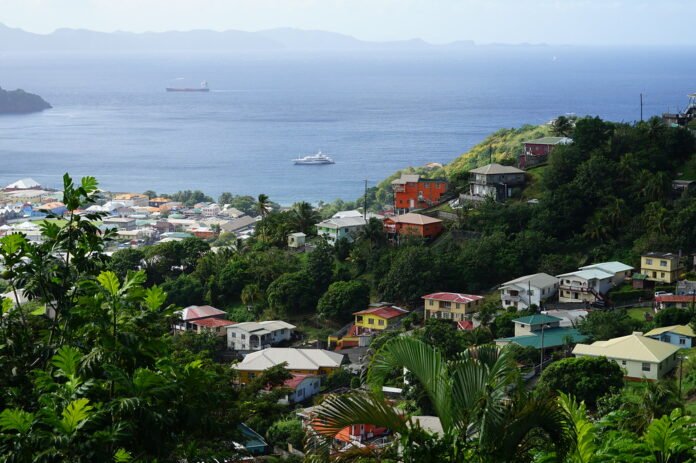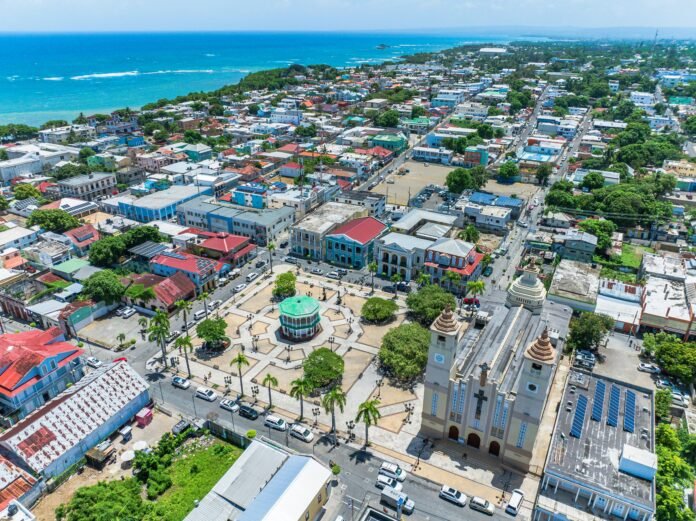Health insurance in Saint Vincent and the Grenadines is undergoing significant transformation, marked by the development of a National Health Insurance (NHI) system. Presently, both public and private health insurance systems coexist, offering distinct advantages and limitations in terms of accessibility, cost, coverage, and quality of care.
Public Health Insurance: Structure and Accessibility
The public system is anchored by the National Insurance Services (NIS), a contributory social insurance scheme. NIS primarily provides financial benefits such as sickness, maternity, invalidity, and funeral coverage but does not offer direct healthcare services. Contributions are mandatory for employed persons (8% of earnings split between employee and employer) and optional for self-employed individuals. Dependents like children, the elderly, and indigent persons may receive government-subsidized care.
Public healthcare is also facilitated through government-run hospitals and clinics, including the Milton Cato Memorial Hospital and over 40 health centers across the islands. These facilities offer basic services such as primary care, maternal care, chronic disease management, and immunizations. However, services are often centralized in the capital, Kingstown, and suffer from limited specialist availability and resource constraints.
A National Health Insurance system is currently in development, aiming to provide universal health coverage. Proposed benefits include outpatient and inpatient care, diagnostics, surgery, dental and mental health services, and prescription drugs. The NHI, once operational, will mark a substantial shift toward comprehensive, public-funded healthcare for all legal residents.
Private Health Insurance: Options and Advantages
In contrast, private health insurance in Saint Vincent and the Grenadines offers a range of individualized and international plans catering to both locals and expatriates. Providers such as Cigna, Bupa, Allianz, and AXA offer global coverage with features like emergency evacuation, inpatient care, maternity, and dental services. These plans are often used by expats and residents seeking advanced or offshore care.
Local providers and private hospitals such as the Modern Medical and Diagnostic Center and Arnos Vale Medical Center offer insurance packages or membership plans, often giving access to quicker services, shorter wait times, and specialized care. These are essential for those who prefer convenience, discretion, or access to services not readily available in public facilities.
Supplementary private health insurance is also popular for covering elective procedures and specialist consultations not handled by the public system.
Similarities and Key Differences
Both public and private systems aim to improve health outcomes and provide some level of financial protection. However, the public system is largely needs-based and limited in scope, while the private sector caters to demand-based, specialized, and often higher-quality care. The cost of private insurance is significantly higher, but it also provides access to a broader range of services, including care abroad.
With the upcoming NHI, the gap between public and private coverage is expected to narrow, making healthcare more equitable and accessible. Until then, many residents rely on a hybrid approach, using public services for basic care and private insurance for specialized or overseas treatment.
Top Public Health Insurance Programs in Saint Vincent and the Grenadines
Saint Vincent and the Grenadines (SVG) does not currently have a wide array of standalone public health insurance providers, but it operates a core public system with structured benefits delivered through government-led programs. These are supported by ongoing reforms and international partnerships aimed at creating a more inclusive national health insurance framework. Below is an overview of the key public health insurance and social protection mechanisms available in the country.
1. National Insurance Services (NIS)(Official website: https://www.nissvg.org/)
- Cost: 8% of insurable earnings (3.5% paid by employee, 4.5% by employer); voluntary contribution of 6.5%–7.5% for self-employed and non-employed persons.
- Available Services/Coverage Features: This is not a health insurance scheme in the traditional sense but rather a contributory social insurance program. It provides financial protection through sickness benefits, maternity leave payments, employment injury benefits, invalidity, funeral grants, and survivor’s pensions. It does not cover direct healthcare services like hospital bills or prescriptions.
- Open for All or Limited: Available to employed persons, self-employed contributors, and through special provisions, some voluntary contributors.
- Core Financial Features: Offers short-term benefits during illness and maternity as well as long-term support such as pensions and survivor benefits. Payments are based on wage records and duration of contributions.
- Consumer Satisfaction Score: Moderate to high; beneficiaries generally appreciate the financial support but highlight the need for broader health coverage.
2. National Health Insurance (NHI) System (In Development)
- Cost: Proposed at 7.5% of insurable earnings, split between employer and employee (3.75% each).
- Available Services/Coverage Features: Once implemented, the NHI aims to provide a comprehensive benefits package including preventive services, diagnostics, outpatient and inpatient care, surgery, emergency medical services, prescription drugs, dental, eye care, rehabilitation, and mental health services.
- Open for All or Limited: Will aim for universal coverage, accessible to all legal residents of SVG regardless of employment status.
- Core Financial Features: Contributions-based model with subsidies expected for low-income and vulnerable populations. The scheme is intended to reduce out-of-pocket expenses and improve access to essential healthcare services.
- Consumer Satisfaction Score: Not yet measurable as the system is still in development, but public support is high due to the potential for broader access and reduced healthcare costs.
3. Public Healthcare Services via Ministry of Health, Wellness and the Environment (MOHWE)
- Cost: Mostly free or low-cost at point of service, funded through general taxation and external grants.
- Available Services/Coverage Features: Includes primary care, maternal and child health services, immunizations, chronic disease management, and emergency care. The Milton Cato Memorial Hospital and district health centers serve as the main facilities.
- Open for All or Limited: Open to all residents, including indigent populations.
- Core Financial Features: Government-financed; cost is heavily subsidized. Services are often constrained by staffing and equipment availability.
- Consumer Satisfaction Score: Mixed; while many appreciate access to basic services, others cite long wait times, under-resourced facilities, and inconsistent quality.
4. Social Assistance Health Programs
- Cost: Free for eligible individuals such as the indigent, elderly, and children.
- Available Services/Coverage Features: Provides essential medications, hospital services, and sometimes transport assistance for medical care.
- Open for All or Limited: Targeted to vulnerable and financially disadvantaged groups.
- Core Financial Features: Fully subsidized by the government, often in collaboration with external donors or aid programs.
- Consumer Satisfaction Score: Generally favorable among recipients, although concerns about consistency and limited reach persist.
5. Regional & Donor-Supported Public Health Initiatives
- Cost: Free for targeted services (e.g., vaccinations, maternal health programs).
- Available Services/Coverage Features: Supportive health campaigns, disease screening, child and maternal health care, and resilience-focused infrastructure improvements.
- Open for All or Limited: Limited to specific demographic groups or health needs, depending on program.
- Core Financial Features: Funded by international bodies like the World Bank, PAHO, and regional CARICOM initiatives.
- Consumer Satisfaction Score: High for short-term impact programs; less so for sustainability and follow-up care.
Top Private Health Insurance Providers in Saint Vincent and the Grenadines
In Saint Vincent and the Grenadines (SVG), the private health insurance market is limited but essential, especially for residents and expatriates seeking broader medical coverage than what the public system offers. These insurers generally provide regional or international health plans and are commonly used to access private clinics locally or receive care abroad. While only a few private health insurers are active in SVG, they play a vital role in filling the gaps left by the public healthcare system. Below are the main private health insurance providers available in the country.
1. Sagicor Life Inc.(Official website: https://www.sagicor.com/en-vc)
- Cost: Premiums vary based on age, medical history, and coverage plan. Basic plans may start around EC$200–EC$400 per month for individuals.
- Available Services/Coverage Features: Offers comprehensive health plans covering hospitalization, surgical expenses, specialist consultations, maternity care, overseas medical treatment, and diagnostic services. Some plans include dental and vision.
- Open for All or Limited: Open to individuals, families, and employers providing group policies.
- Core Financial Features: Offers flexible deductible and co-insurance options. Coverage includes direct settlement with certain healthcare providers and reimbursement models.
- Consumer Satisfaction Score: High. Policyholders appreciate the responsive customer service and reliability for claims payments, though some mention delays in processing reimbursements.
2. Guardian Life of the Caribbean Ltd.(Official website: https://www.myguardiangroup.com/companies/guardian-life-of-the-caribbean)
- Cost: Monthly premiums typically range from EC$250–EC$600 depending on age, health condition, and selected benefits.
- Available Services/Coverage Features: Covers general practitioner visits, hospitalization, diagnostics, maternity benefits, emergency evacuation, and outpatient care. Options for major medical coverage and preventive care add-ons are available.
- Open for All or Limited: Available to residents and citizens; group policies also offered to businesses.
- Core Financial Features: Provides tiered benefit plans, co-pay systems, and some no-claim bonuses. Coverage often includes access to regional and international care networks.
- Consumer Satisfaction Score: Moderate to high. Praised for extensive coverage options but noted for relatively higher premium costs.
3. BGA Insurance Group (Broker for International Plans)(Official website: https://international.cgcoralisle.com/)
- Cost: Premiums depend on international insurer selected (e.g., Cigna, Allianz); can range from EC$400–EC$1,200/month.
- Available Services/Coverage Features: Offers access to international plans with broad benefits including cancer treatment, hospitalization, evacuation, specialist care, and sometimes wellness services.
- Open for All or Limited: Open to individuals and families, especially expatriates and business professionals.
- Core Financial Features: Brokered plans often feature high annual coverage limits (up to US$1 million or more), global direct billing, and travel assistance.
- Consumer Satisfaction Score: High among clients needing regional or international care. Customers value the depth of coverage and choice of global providers.
4. Colonial Medical Insurance (Through CG United Insurance)(Official website: https://cgunited.insure/)
- Cost: Plans start around EC$250 monthly for basic coverage and go higher for comprehensive or family coverage.
- Available Services/Coverage Features: Covers outpatient and inpatient care, prescription drugs, dental, maternity, and diagnostic services. Also includes accident and emergency care.
- Open for All or Limited: Open to individuals and businesses.
- Core Financial Features: Includes annual maximums, deductibles, and co-insurance. Some plans offer wellness reimbursements or annual health checkups.
- Consumer Satisfaction Score: Generally favorable, especially for fast claims turnaround and accessible coverage, though plan limits are sometimes viewed as restrictive.
5. Pan-American Life Insurance Group (PALIG)(Official website: https://www.palig.com/eastern-caribbean)
- Cost: Varies based on selected coverage, but generally mid-to-high-tier pricing starting at EC$300/month and upwards.
- Available Services/Coverage Features: Offers major medical plans with features such as hospitalization, surgery, intensive care, transplants, and maternity. Some plans include second opinion services and access to medical networks in the U.S. and Latin America.
- Open for All or Limited: Available to individuals, families, and employers.
- Core Financial Features: Structured with deductible options, co-payments, and coverage tiers. PALIG also provides access to international care and second opinion services.
- Consumer Satisfaction Score: High among regional policyholders. Policyholders appreciate the plan customization and international claim settlement support.
READ MORE: Private and public health insurance of Nigeria (Make informed choices)


